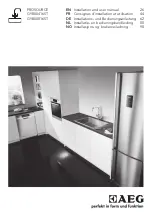
15
7.
Installing pipes and fume exhaust systems
The construction of the gas exhaust pipe must be suitable for the purpose in
accordance with local requirements and respecting the regulations.
Important! An inspection T must be inserted at the outlet of the exhaust
pipe of the wood-fired boiler with an airtight cover to permit regular inspection or
discharge of heavy dust and condensate.
The exhaust duct must be mounted in such a way that cleaning and maintenance
is ensured by insertion of the inspection points.
Under normal operating conditions, the drawdown of the combustion gases must
lead to a depression depending on the of 18 to 21 Pa, measured 1,5 m above the
boiler outlet.
The wood boiler cannot share the chimney with other equipment.
The chimneys installed outside the house must be double-walled in stainless steel.
The exhaust pipe can generate condensation, in this case it is advisable
to establish suitable condensate collection systems.
Failure to meet these requirements undermine the proper functioning of the
boiler. Comply with the instructions given in the diagrams.
The boilers work with the combustion chamber in depression, so it is absolutely
necessary to have a flue pipe that extracts the flue gases properly.
Fume duct material:
The pipes to be installed must be rigid, of stainless steel and
have a minimum thickness of 0,5 mm, with joints for the union between the different
sections and accessories.
Isolation:
Smoke ducts must be double wall insulated to ensure that the fumes do
not cool during the course to the exterior, which would lead to improper drainage and
condensation that could damage the appliance.
“T” output:
Always use an inspection "T" on the boiler outlet.
Chimney crown:
you should always install a chimney crown to prevent the return
of fumes.
Depression in chimney:
Any other type of installation must ensure a depression of
18 to 21 Pa (depending on the boiler model) measured at hot and at maximum power.
















































